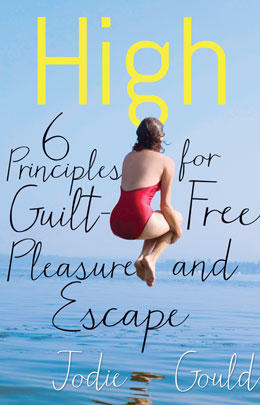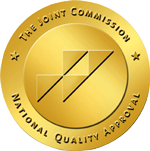
"The mere act of drawing and creating art can help us alleviate stress in several ways."

Other titles you may like.
Visit Recovery Road to view and listen to all the episodes.
Episode 37 -- August 20, 2020
Making Art for a Natural High
We all have our own reasons for why we drank or used or did whatever we did to numb ourselves. We escaped, we hid. But what can we do now that we're in recovery? How can we capture some of that high without substances? This is something each one of us has to answer for ourselves, but we can get a little help from Jodie Gould in High: Six Principles for Guilt-Free Pleasure and Escape. She offers us many ideas, some of which (like travel) aren't options during the global pandemic, but art therapy is definitely within our reach. Take her tips, grab a notebook and pencil, and go away. Escape. Enjoy.
This excerpt is from High by Jodie Gould and has been edited for brevity.
What is behind this universal need to engage in mind-altering pleasure? One explanation is really quite simple--getting high usually makes us feel better than we do when we aren't. Whether it's purely recreational or whether it's an attempt to relieve physical pain, depression, or hardship, the use of alcohol and other drugs has been and always will be a go-to option. But what else can we do to escape the boredom and inevitable pain and sadness that we all sometimes feel during our lives? How can we find pleasure or simply experience the joy in living?
However it is you choose to alter your mood, I invite you to explore what getting high is all about and learn how you can fulfill this natural desire to transcend everyday life in ways that expand your consciousness naturally, without harming your mind, body, and spirit. Read on, and you will discover the six Pleasure Principles, which are:
One: Move (inhabiting the body through physical activity);
Two: Restore (revitalizing mind, body, and spirit);
Three: Connect (bonding with family, friends, and community);
Four: Create (expressing and expanding the inner self );
Five: Celebrate (affirming life, experiencing joy); and
Six: Give
Pleasure Principle #4, creating to expand the inner self, includes the visual arts. Art therapy can be beneficial to children with disabilities, people in prisons, and people who have disorders such as depression or addiction. But the truth is anyone can use the visual arts to express themselves creatively, reduce stress, or get in touch with their feelings. Remember how we freely expressed ourselves through art as children, whether it was drawing with crayons, finger painting, using watercolors, or sculpting with clay or play dough? Sadly, as adults we often lose some of our spontaneity and drive to create, and the majority of the art we do is doodles we draw during meetings or while talking on the phone. As with music, writing, or any form of self-expression, the point isn't perfection, fame, or money--it's to unleash your creative spirit and get in touch with that joy and freedom that children naturally experience if left to their own devices. The following are just a few reasons for us to get back in touch with our inner five-year-old.
Making Art to Alleviate Stress
The mere act of drawing and creating art can help us alleviate stress in several ways. Mostly, it helps with distraction, flow, and self-care.
Distraction. So you had a tiff with a colleague at work, or you fought with your spouse. Get out a sketch pad, and draw something to take your mind off of what's making you anxious--even if it's just for a few minutes. When you are finished being engrossed in your sketches, you'll have a clearer head with which to tackle your problems.
Flow. Experts say art creates a quality called flow, which refers to being engaged in something that puts you in a meditative state, where your mind is cleared of interfering thoughts. This artful flow has much of the same benefits of meditation, leaving you feeling more relaxed when you are done.
Self-care. Having a creative outlet, such as making art, can make you feel more balanced in your life, especially if you are dragged down by the worries of work, parenting, elder care, financial stress, illness, or other issues. With all of our responsibilities, we often forget that we need and deserve time to take care of ourselves. By taking time to create art, even if it's for a short period, you not only will rejuvenate your spirit but will have something beautiful (or at least a conversation piece) to show for it!
Really, one of the best DIY stress relievers for budding artists is keeping a sketchbook (which is the art equivalent to a writing journal). Keeping a sketchbook can be cathartic, creative, and anxiety-reducing. Here are a few ideas for using a sketchbook for stress management:
- You could draw something that represents how you are feeling about what's happening in your life and the things that are causing you stress. This exercise can be a way of processing your emotions. (I experimented with this during a particularly anxious period and drew a rendering of Edvard Munch's The Scream. If you're not familiar with this painting, you can look it up online.)
- Try sketching pictures that express your feelings about a stressful event from the past. Many have found this experience to be healing. Note: If you are severely anxious or depressed, you might want to discuss your images and the feelings they evoke with a therapist or psychologist.
- Keep a dream sketch diary. Draw scenes from dreams you'd like to remember or better understand. (Again, you can discuss these with a professional, if you wish.)
- Along the same lines, you can Keep a beauty sketch diary. Draw the faces of those you love, places you find peaceful, or flowers and landscapes you think are lovely. Looking back at drawings of things that you find beautiful is a way of revisiting happier times, especially during periods of stress. (Photos also work to jog pleasant memories.) You can also just make art a part of your everyday life, stress or no stress.
- Go online and visit a museum or gallery, sit quietly gazing at a beautiful landscape or portrait. Impressionist paintings do it for me, but whatever style of art you enjoy can rejuvenate your spirit and evoke pleasant thoughts. Steer clear of surrealist paintings if you're feeling on edge. If you aren't, surrealists and other painters, such as Hieronymus Bosch and René Magritte, can be pretty trippy, if that's your kind of high. On the other end of the spectrum are the landscape painters, who can both soothe and stir you with their dramatic scenes of natural beauty.
So get out your sketch pad, finger paints, crayons, and brushes, and have some fun!
Read more about how to find more guilt-free pleasure and escape in High by Jodie Gould.
About the Author:
Jodie Gould is an award-winning journalist and author of eight books, including Women & Recovery, with Kitty Harris, Ph.D., and Beautiful Brain, Beautiful You with Marie Pasinski, M.D. She has been a frequent contributor to Woman's Day and Family Circle, and she wrote a monthly column for Showtime.com. Gould has been interviewed on numerous TV and radio shows, such as Oprah, ABC World News Tonight, and Extra.
© 2015 by Jodie Gould
All rights reserved. Published 2015.



